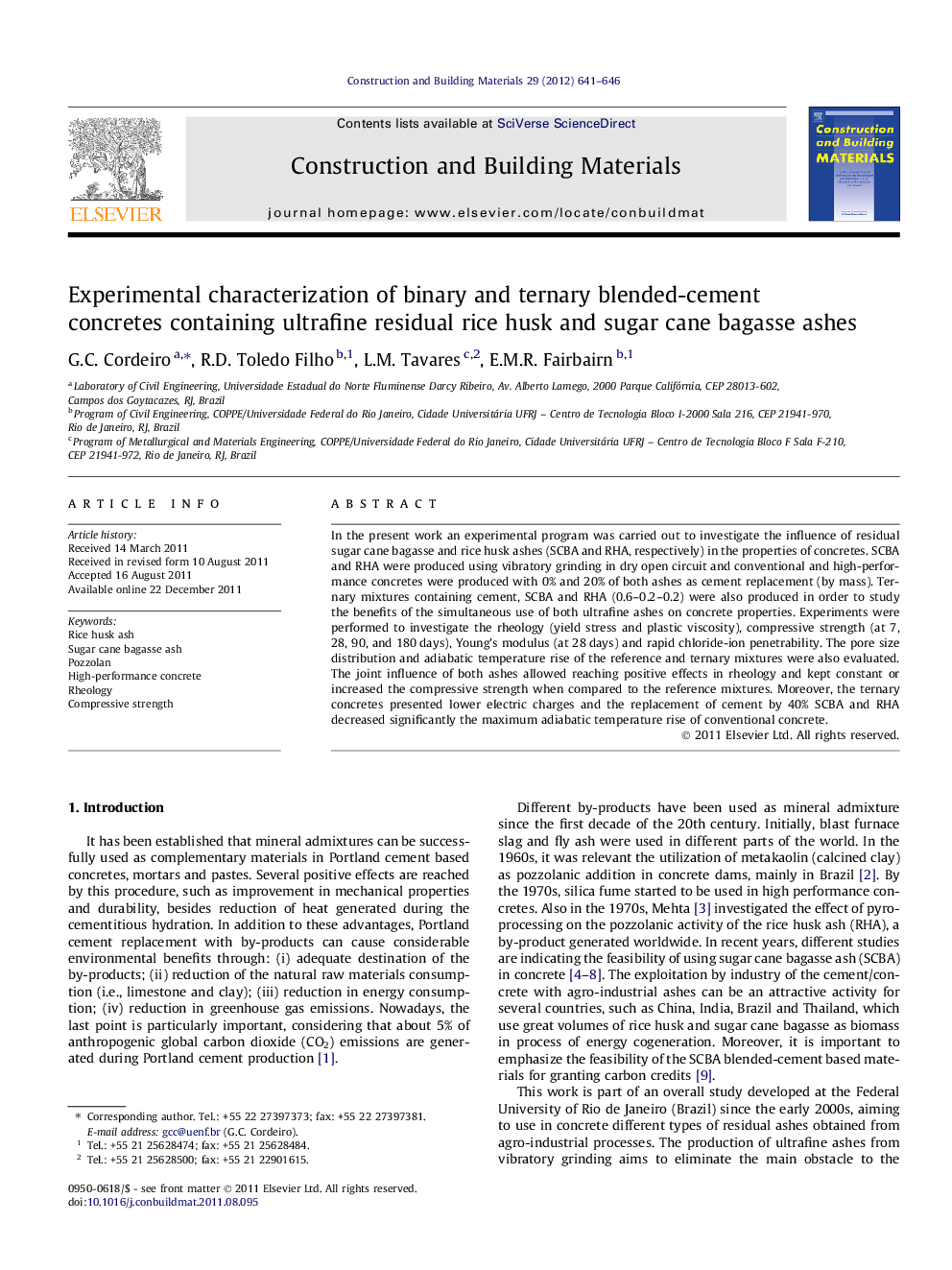| Article ID | Journal | Published Year | Pages | File Type |
|---|---|---|---|---|
| 259115 | Construction and Building Materials | 2012 | 6 Pages |
In the present work an experimental program was carried out to investigate the influence of residual sugar cane bagasse and rice husk ashes (SCBA and RHA, respectively) in the properties of concretes. SCBA and RHA were produced using vibratory grinding in dry open circuit and conventional and high-performance concretes were produced with 0% and 20% of both ashes as cement replacement (by mass). Ternary mixtures containing cement, SCBA and RHA (0.6–0.2–0.2) were also produced in order to study the benefits of the simultaneous use of both ultrafine ashes on concrete properties. Experiments were performed to investigate the rheology (yield stress and plastic viscosity), compressive strength (at 7, 28, 90, and 180 days), Young’s modulus (at 28 days) and rapid chloride-ion penetrability. The pore size distribution and adiabatic temperature rise of the reference and ternary mixtures were also evaluated. The joint influence of both ashes allowed reaching positive effects in rheology and kept constant or increased the compressive strength when compared to the reference mixtures. Moreover, the ternary concretes presented lower electric charges and the replacement of cement by 40% SCBA and RHA decreased significantly the maximum adiabatic temperature rise of conventional concrete.
▸ Sugar cane bagasse and rice husk ashes are used as pozzolan. ▸ Ordinary and high-strength concretes with binary and ternary mixtures. ▸ The ashes caused improvement in rheology, strength and durability. ▸ Ternary mixture decreased the adiabatic temperature rise.
